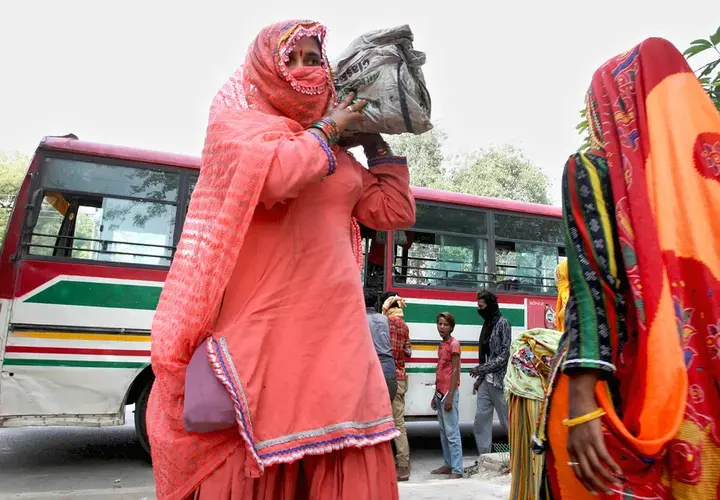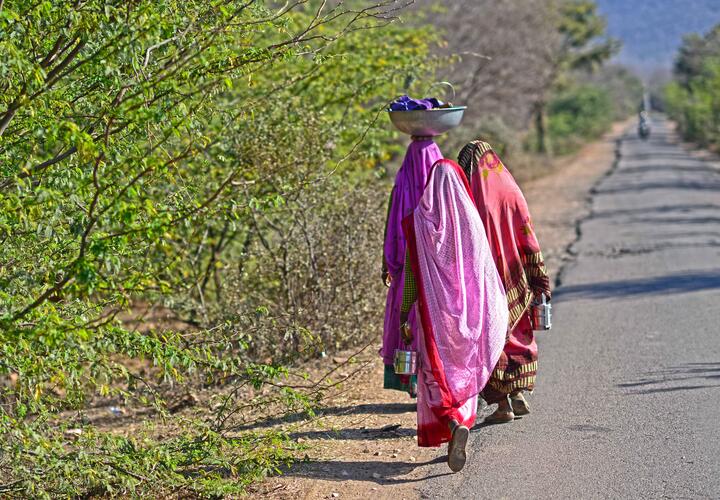Understanding gender gaps in pandemic recoveries for displaced migrants in India
How has Covid-19 impacted the livelihoods of India’s vulnerable migrant population? The team at Inclusion Economics conducted a panel survey tracking displaced migrant workers during the Covid-19 pandemic and found that women face greater barriers to economic recovery.
Research to inform the policy response to Covid-19
The Covid-19 pandemic disrupted the livelihoods of India's most vulnerable populations, including millions of urban laborers who lost their jobs and returned to the countryside. Following a nationwide lockdown, these internal migrants fled the urban areas where they worked to return to their villages - where many confronted discrimination and struggled to access local safety nets. India's migrant population continued to face difficult decisions throughout the pandemic, often balancing economic opportunities against the health risks posed by the virus.
Since April 2020, researchers from the Inclusion Economics team – in collaboration with researchers from the University of Southern California, the University of Michigan, Ohio State University, and Tufts University – have conducted a series of surveys of more than 5,000 migrants who returned to their home villages in eastern and central India following the first lockdown. They found that displaced migrants experienced persistent hardships for over a year after the initial pandemic lockdown, with women faring worse. Women were less likely to remigrate or reenter the labor force. Some women dropped out of the labor force entirely, but most unemployed reported seeking or being available to work. By the end of the study, no more than 63 percent of men and 55 percent of women had ever remigrated. In July 2021, male re-migrants earned, on average, 82 percent of their pre-pandemic income, while female remigrants earned only 56 percent.
Nearly 1.5 years after India’s nationwide Covid-19 lockdown began, low-income migrants had not recovered their pre-pandemic incomes and reported high levels of food insecurity.
Study findings were used by policymakers in multiple states to provide responsive social protections to return migrants and inform policies to spur long-term labor market support.
Highlights
Related Publications
Indian female migrants face greater barriers to post-Covid recovery than males: Evidence from a panel study
Displaced migrants of both genders experienced persistent hardships for over a year after the initial pandemic lockdown. Women fare worse, driven by both lower rates of remigration and lower rates of labour market re-entry both inside and outside home villages. Some women drop out of the labour force entirely, but most unemployed report seeking or being available to work. In short, pandemic-induced labour market displacement has far-reaching, long-term consequences for migrant workers, especially women.
About the Project
Principal Investigators:
Research Partner:
This research has received support from:
- The Abdul Latif Jameel Poverty Action Lab (J-PAL) Innovation in Government Initiative
- The Abdul Latif Jameel Poverty Action Lab (J-PAL) Jobs and Opportunity Initiative
- The Center on Gender Equity and Health – Evidence-Based Measures of Empowerment for Research on Gender Equality (EMERGE)
- Institute of Labor Economics (IZA) - Gender, Growth, and Labor Markets in Low Income Countries Programme










